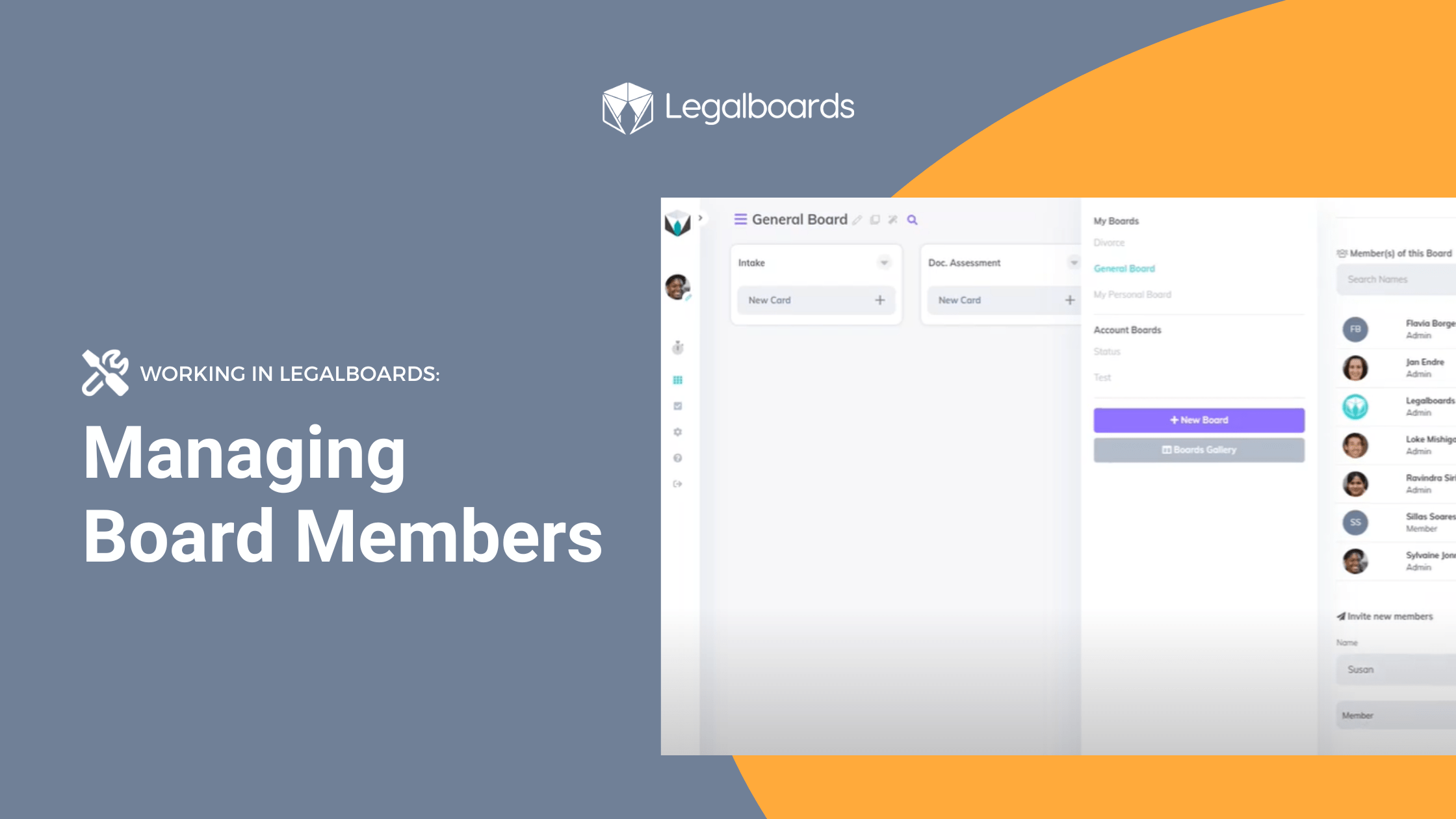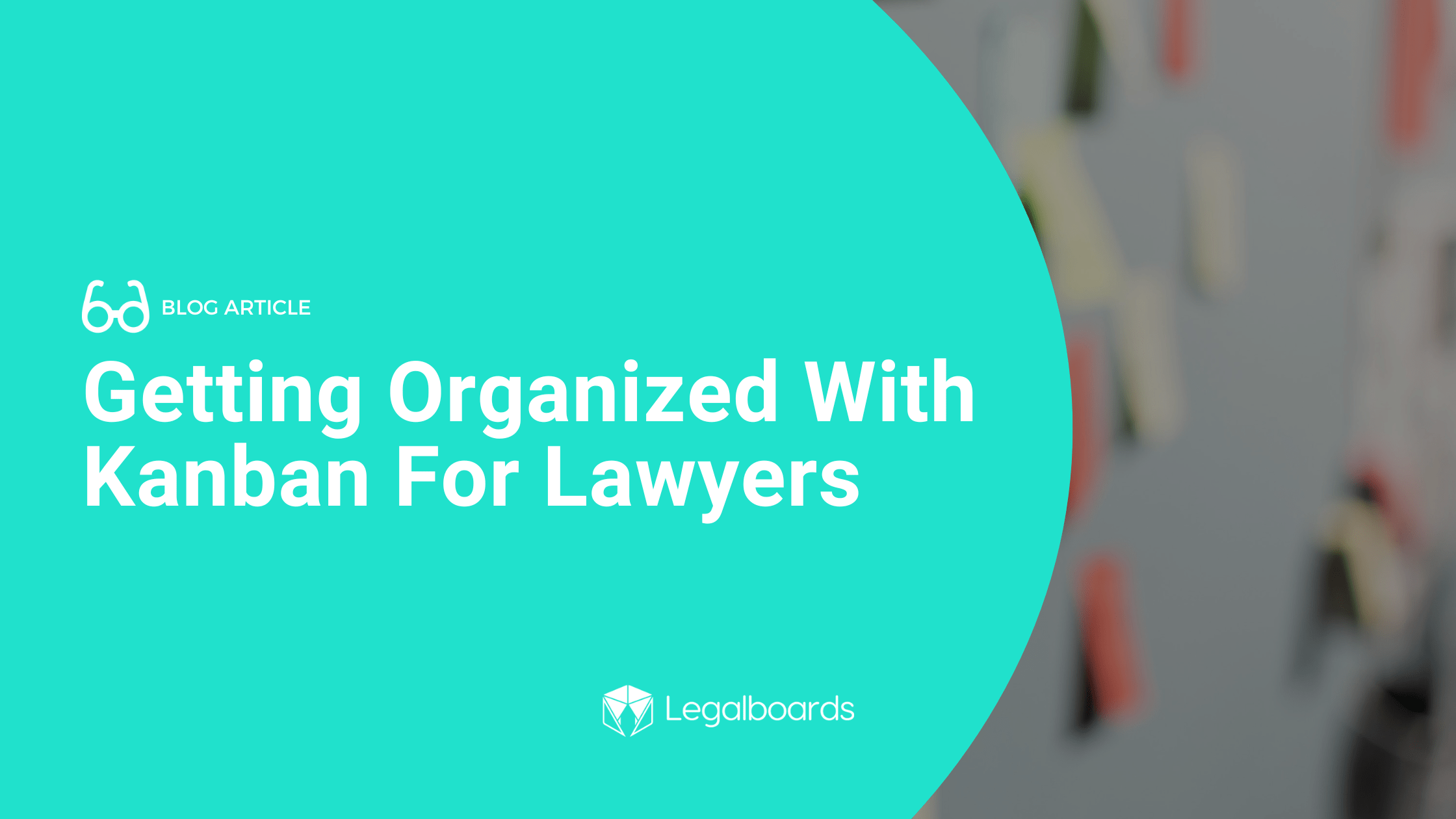It’s no secret that Kanban and Agile methodology is one of our favorite subjects. Here at Legalboards, we see firsthand how much it can affect a law firm’s productivity and efficiency. At its most basic level, it opens up the visibility into daily work, which then positively impacts the service provided to clients. But, it can seem like an overwhelming concept to start applying to your firm even when in reality, it’s not.
Why Kanban and Agile?
Kanban allows law firms to make their work visible. For many of us, our first task of the day is figuring out a to-do list of action items based on our memory. This can quickly become complicated. It relies on a perfect memory for every case we’re working on, which can be difficult to achieve for many reasons.
By implementing Kanban, this process itself can be simplified. A Monday morning meeting between team members is simple- let’s look at our board to see where we left off, and make a plan of action for the most important items.
Law firms especially can see the benefits of this, and you can learn more about how to get started with the basics of Kanban here, or learn more about it in our “Applying Agile to Legal Practices” course here.
Making Kanban and Agile More Effective For Your Team
One thing to keep in mind when considering Kanban and other Agile methodologies is that it can help reduce inefficiencies in your process. Using Kanban, you can document and analyze your workflow, and that visibility is important. But, how can we make sure we’re using this new insight into work properly?
Avoid Multitasking
It’s well documented that multitasking is hindering our ability to work effectively. By multitasking, we’re unable to complete mental tasks effectively when we’re switching between tasks constantly. Psychologists recommend avoiding multitasking when complex tasks are involved as shifting between tasks can cost up to 40% of productive time.
Setting Priorities and Cadence of Tasks
With Kanban, you can identify the tasks that need to be completed and their priority level. By avoiding multitasking and instead creating Work-In-Progress (WIP) limits or queues of tasks, you can set yourself up for success. WIP limits are simply a way to make sure that completing work remains attainable, taking into account what is a reasonable task to complete. For more information about WIP limits, check out John Grant’s “Kanban For Lawyers”.
WIP limits are a helpful way to rein in how much work your team is taking on while also ensuring that the proper cadence is followed. Priorities can change depending on if there’s an emergency related to a case or even just internally for the responsible attorney. Those changes can easily be reflected in the framework because of its flexibility.
How to Start Using Agile Methodology
If Kanban and Agile sound like something you’re interested in implementing at your firm, we can help with that. Check out our other resources, our webinar with Gimbal Canada, or get in touch with us at support@legalboards.com for a personalized demo session of our Kanban interface for your firm.




